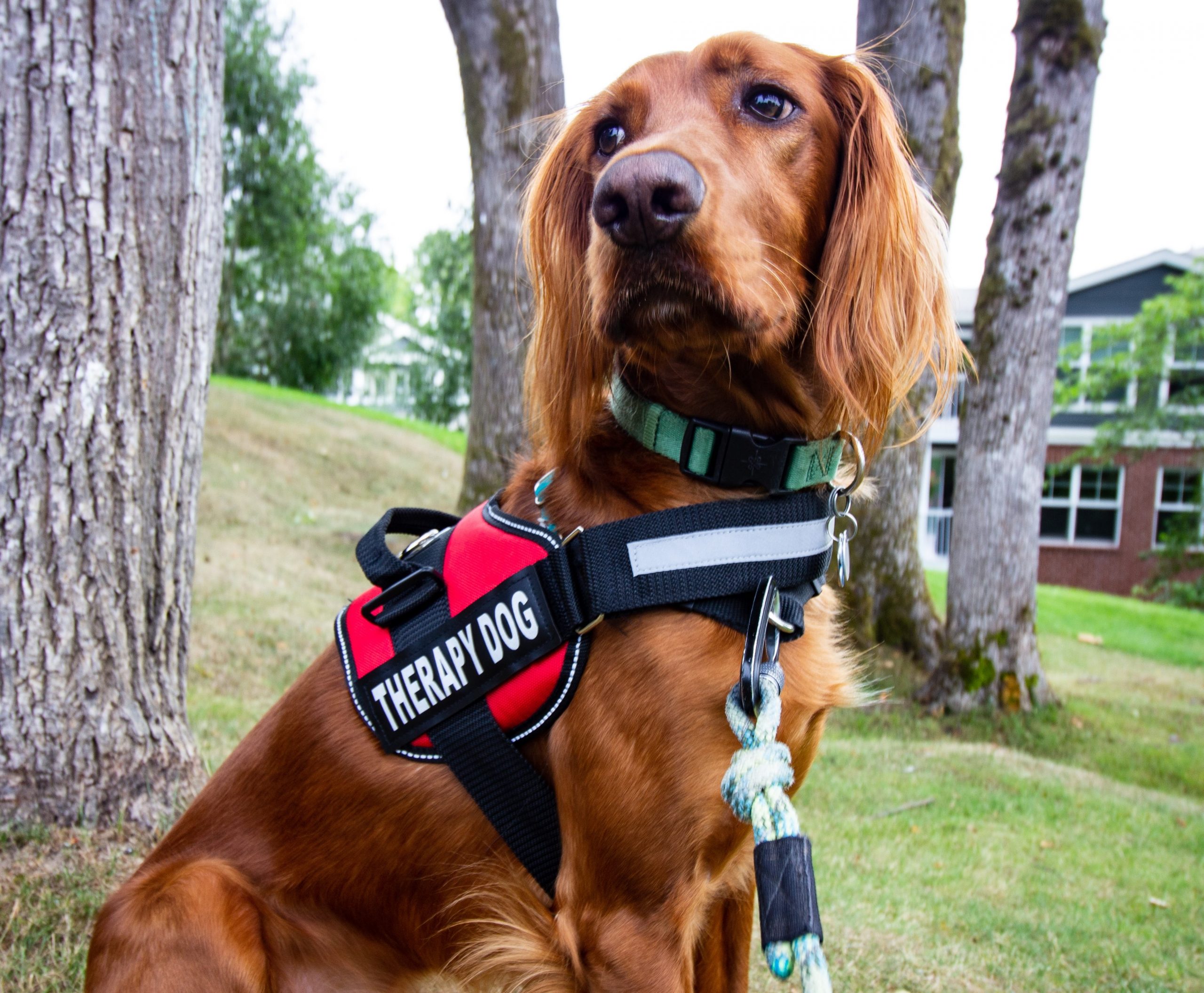Robot Dogs: The Ultimate Guide (2022)
Did you know that there are over 63 million dog owners in the United States? That’s a lot of people who love their furry friends!
No wonder – dogs provide many benefits to their owners, from providing companionship to helping reduce stress levels.
However, not everyone can have a real canine companion. Some of us are allergic to dogs, while some simply cannot have a pet in their apartment. Others simply don’t want the responsibility of having to take care of another living being.
That’s where robot dogs come in. These machines can become a surrogate for a real dog. They’re well-made, responsive, and programmed to interact with their owners in a way that’s similar to how a real dog would. These machines can also provide many of the same benefits as owning a real canine, from reducing stress levels to providing companionship.
The great thing about robot dogs is that they’re not just for kids. Just like their living counterparts, they can be “trained” to perform specialized functions, too.
In this article, we will explore everything you need to know about robot dogs. We will start by explaining how they work, then we’ll look at some of the more advanced features that these machines are capable of.
We will also explore the different robot dogs available on the market today and look at some pros and cons of owning one.
Let’s get started!
What Is a Robot Dog?
A robot dog is a machine made to look and behave like a real canine companion. The earliest robot dogs were basic machines that simply moved back and forth on wheels.
Today, however, the technology has advanced significantly and some robot dogs can move on legs and even mimic complex canine movements like running, sitting down, standing up, and wagging its tail.
At the top end of robot dogs are sophisticated, AI-powered machines engineered for military, police, and other professional use.
What Are the Different Types of Robot Dogs?
There are different types of robot dogs available in the market today. You can find them in toy form, but also as companions – both for kids and adults. There are also robot dogs designed to serve commercial purposes.
Let’s look at each one in more detail:
Robot Dog Toys
The simplest and least expensive types of robot dogs are toys for children.
These are typically battery-powered machines that have simple movements, like forward/backward or side-to-side motions. Designs are usually kid-friendly too, with bright colors, a cartoonish design, and small size (typically less than a foot in height).
These puppies can come in various forms:
- Remote control toy dogs: this type of robot dog can be controlled by a remote. This is great for kids who want to play with a dog, but don’t have the patience to train one.
- Programmable toy dogs: these kinds of robot dogs usually have a touchscreen interface that kids can use to play games with the dog, teach it new tricks, or train it.
- Interactive toy dogs: these robotic pets respond to touch and verbal commands. They can also make a variety of sounds, from barking and growling to whining and whimpering.
There are even toy dogs that can be taught to do “tricks,” like fetching a ball.
Here are some of the more popular brands in the market:
- Top Race is a remote-controlled robot dog that can dance and sing with music plus imitate basic dog behaviors like wagging its tail.
- Hbuds is another remote-controlled toy. You can push a button to make it sit down, do handstands, bark, and other basic commands.
- Out of the three, Zoomer Pup is the one most targeted at kids. These toy dogs are colorful, can play music and flash blinking lights, and perform simple commands.
Companion Robot Dogs
Unlike toy dogs that are purely for entertainment, these robot dogs are meant for companionship and therapy.
They’re equipped with advanced AI and behavior capabilities, as well as voice recognition technology. These allow them to interact with their owners in a way that’s similar to how a real pet would.
This type of machine typically has an electric motor, robust sensors, and other components that make them suitable for kids and adults.
They can:
- Help seniors with dementia and other cognitive issues
- Provide companionship for kids with autism
- Serve as a therapy dog for people who are hospitalized or diagnosed with chronic conditions
- Complement therapeutic interventions for depression, loneliness, and other psychological conditions
- Motivate patients undergoing physical therapy to be more active
Here are some brands that have specialized in developing companion robot dogs:
Joy for All
Joy for All Companion Pets are therapeutic robot dogs that are customized for seniors with dementia, Alzheimer’s, autism, and other cognitive conditions.
They are made to recognize the unique needs of seniors, especially those who are undergoing rehabilitation for cognitive issues. For example, they can be programmed to help keep track of things like medications, schedules, and even hobbies.
They also behave as real dogs do. For instance, you can scratch them under the chin or give them belly rubs. They will also bark and whine if they don’t want you to leave them alone.
Clinicians like UnitedHealthcare and AARP have included Joy for All Companion Pets in clinical studies. These have shown positive effects on patients, such as improved mood and activity levels.
Aibo
Aibo, which means “pal” in Japanese, is a companion robot dog from Sony.
Equipped with AI technology, it has a wide range of sensors and cameras that allow it to be aware of its surroundings, as well as interact with people. This includes its ability to learn your face, voice, and habits so it can have a more custom-made relationship with you.
Users can also feed Aibo with virtual food and interact using voice commands. It also has more natural movements, such as wriggling its paws and doing play bows.
Like real dogs, Aibo robot dogs can interact and play with other Aibos.
Robot Dogs for Commercial Use
Commercial robot dogs are high-tech machines designed for security, field monitoring, and other non-entertainment uses.
Below are some examples:
Field Monitoring
Robot dogs are being used in different industries to monitor sites of critical importance, such as military bases and borders.
For example, security robot dogs are being used to detect explosives at airports and other highly sensitive locations.
Some are even equipped with cameras for high-resolution images of suspicious objects, as well as night vision to enable them to work in low-light conditions.
Combat and Security
Robot dogs can also be used for security and combat missions. For instance, Spot from USA company Boston Dynamics recently took part in reconnaissance exercise in France.
Chinese-made AlphaDog has 5G capabilities, can run 9 miles an hour, and adjust to environmental conditions to avoid being damaged or falling over.
Another brand is Digidog, which is designed for police surveillance, bomb squad support, and similar missions. The Digidog has lights, sensors, and two-way surveillance features so officers can monitor and track suspicious individuals.
Other industries like healthcare, biohazard, environmental monitoring, and other missions also benefit from robot dogs.
Robot Dogs: Pros, Cons, and Concerns
Like any piece of technology, robot dogs have their pros and cons, as well as concerns among lawmakers, consumers, and other stakeholders.
Pros
Can improve a person’s quality of life
When it comes to improving the quality of life of individuals suffering from depression, loneliness, or other psychological conditions, robot dogs are very beneficial.
They have been shown to increase activity levels in patients who are undergoing rehabilitation for cognitive issues like dementia and Alzheimer’s.
They can also help bring a feeling of companionship to individuals who do not have anyone else to spend time with, such as seniors living in nursing homes or people fighting illnesses like cancer.
Helps teach children about responsibility and empathy
Children can learn more about empathy, caring for another creature, and even how to take care of pets when they are given robot dogs as gifts.
They also learn responsibility by caring for the robot dog, feeding it, walking it, and playing with it.
Can detect hazards in homes and workplaces
In terms of preventing accidents and disasters, robot dogs can also prove beneficial. For instance, they have been used in factories to monitor the level of air pollution in real-time.
This allows workers to take actions to reduce or prevent hazards like fires, chemical leaks, or toxic fumes.
Boosts efficiency and safety in sectors like security, engineering, and healthcare
From reducing dangers in sensitive work areas like nuclear power plants to preventing accidents on construction sites or mines, robot dogs are proving to be extremely useful.
They can also act as extra eyes and ears for security forces, making patrols easier to manage.
Cons and Concerns
Can be expensive and hard to acquire
One of the main issues with owning a robot dog is that it can be very expensive. This limits their potential market and makes them difficult for average consumers to acquire.
Some individuals may also not be able to afford expensive repairs or maintenance in case the robot dog malfunctions, which further limits their potential for growth.
Can be hacked and used maliciously
Robot dogs can also pose a number of cyber-security threats if they are not properly protected. This makes them easy targets for hackers, who can use the robot dog to track a person’s movements.
Additionally, they can be used to listen in on private conversations, unlock doors and gates, or steal personal information like bank accounts or social security numbers.
Legal and ethical considerations
Some stakeholders are also raising legal and ethical concerns about robot dogs, especially those used by military and police forces.
For instance, some individuals are concerned that robot dogs might be used to round up citizens and terrorism suspects if they are not properly regulated.
Others are concerned that robot dogs could be used to execute illegal search and seizure operations.
Other legal concerns include the lack of accountability regarding robot dogs, who can possibly function as weapons since their design allows for the delivery of deadly force.
Final Thoughts
Whether as companions or tools for work, robot dogs are proving to be instrumental in accelerating technological advancement and improving the quality of life for many people.
Combining cutting-edge robotic technology with the latest advancements in artificial intelligence, robot dogs are becoming increasingly capable of taking on more important roles.
However, since they are still in their early stages of adoption, we can expect to see a lot more growth and improvement in the coming years.
Frequently Asked Questions (FAQs):
Where can you buy robot dogs?
You can easily buy robot dog toys in stores and online retailers such as Amazon. You can also order one from their respective company sites.
You can also find used robot dogs in online marketplaces like eBay.
How much are robot dogs?
The price of robot dog toys can be as low as $40 and as high as $200 up to thousands of dollars for more advanced models and commercial versions.
Are robot dogs waterproof?
It depends on the model. Toy dogs are not waterproof. Commercial models are usually water-resistant and some are even fully submersible.
What age is appropriate for robot dogs?
Most toy and companion models of robot dogs are for children aged 5 and above.
Can you train a robot dog?
Again, it depends on the model and functionality of the robot dog. Toy dogs have limited functionalities. AI-equipped companion and commercial models can be trained using voice commands, hand signals, and interactive feedback from their owners.
Are robot dogs safe for kids?
Yes, most of the toys and companion models are safe for kids. Since toy dogs are battery-operated, there’s also minimal risk of getting shocked.
However, they should be supervised by adults in case they try to play with the robot dog in ways that could potentially damage it. It’s also important to monitor choking hazards, as some robot dogs have removable parts.
Can you feed robot dogs?
Some companion models of robot dogs like Aibo can be fed virtually through the accompanying app. This is similar to how Tamagotchis work, where the robot dog is “fed” virtually through the device.
Is the robot dog from the Black Mirror episode real?
Metalhead, the dog from Black Mirror, is not real. However, it’s based on real robot dog models like Spot from Boston Dynamics.
| My Dog is a Robot covers the pet technology industry. Keep up with the latest news about products, services and companies in the pet tech space. | Contact Us |




